Table of contents
- Refurbishment of used motorcycles Use the winter break
- Youngtimers at a discount rate?
- After buying is before buying
- Mechanic courses
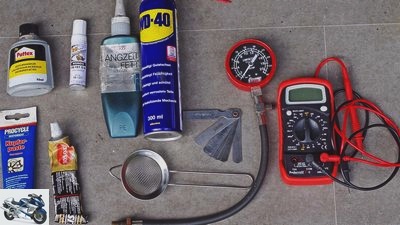
Ralf Petersen
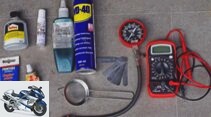
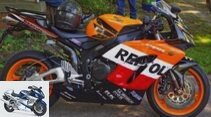
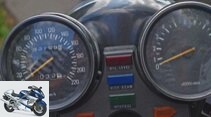
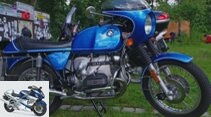
15th pictures
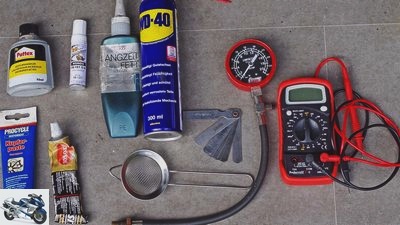
Ralf Petersen
1/15
What is needed: repair instructions, compression meter, feeler gauge (for candles, valves), oil strainer, multimeter, various cleaning agents / lubricants (WD 40, grease, copper paste, chrome plaster, brake cleaner etc.), touch-up pen, rust converter.
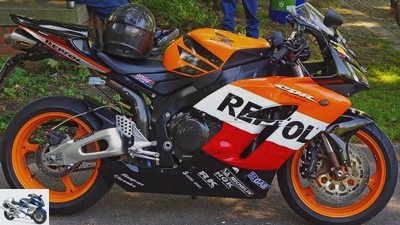
Ralf Petersen
2/15
Outside hui … Second-hand buyers must not be dazzled.
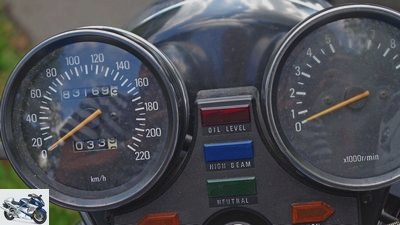
Ralf Petersen
3/15
The mileage could be real. Often, however, it is fooled.
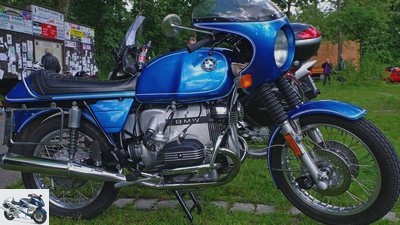
Ralf Petersen
4/15
Perfect is expensive: untampered, well-cared for oldtimers.
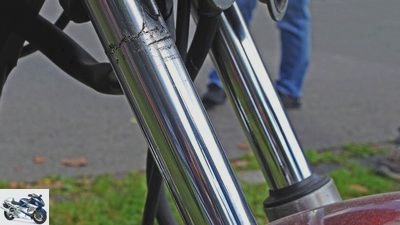
Ralf Petersen
5/15
Typical stall damage: fork seals that have been damaged by leaks.
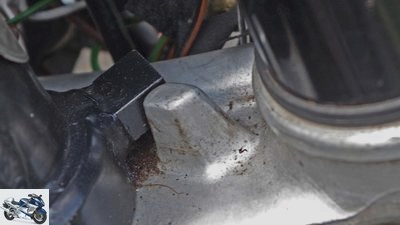
Ralf Petersen
6/15
Hidden fall damage can be recognized by the steering stop.
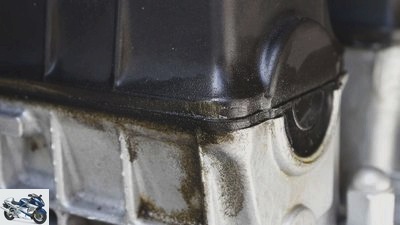
Ralf Petersen
7/15
Bad end to a test drive: oil leak after full throttle stage.
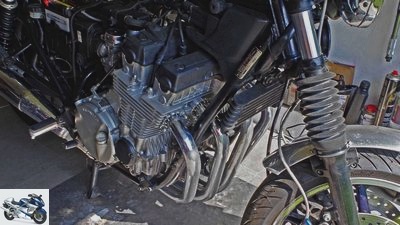
Ralf Petersen
8/15
Inventory: thorough inspection in the garage.
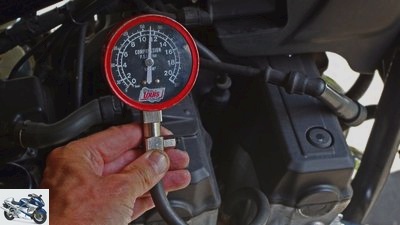
Ralf Petersen
9/15
The compression test shows that everything is OK here.
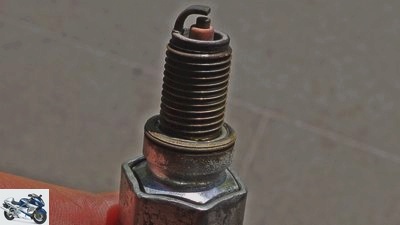
Ralf Petersen
10/15
Looks good: fawn candles are evidence of the right mixture.
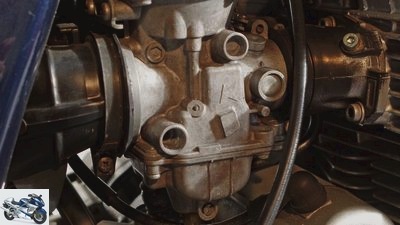
Ralf Petersen
11/15
Analysis of the inner values: Empty the float chamber.
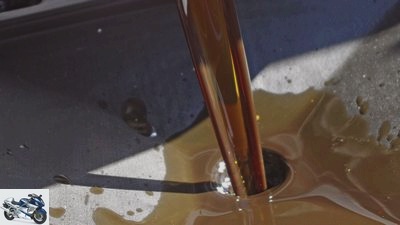
Ralf Petersen
12/15
Oil change: also reveals a lot about the engine and transmission.
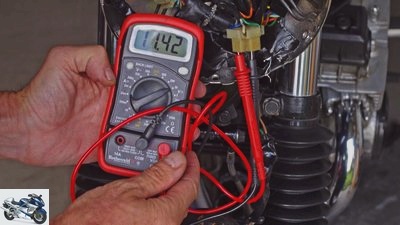
Ralf Petersen
13/15
Fight against electrical traffic: Cable check with a multimeter.
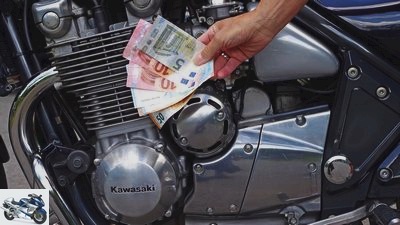
Ralf Petersen
14/15
Only when the used offer has withstood the thorough check can you complete the purchase.
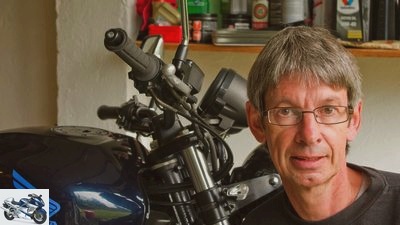
Ralf Petersen
15/15
Ralf Petersen. The author works as a further education teacher at the VHS Duisburg and has been organizing mechanics courses for 21 years.
counselor
workshop
Reconditioning used motorcycles winter break
Refurbishment of used motorcycles
Use the winter break
What creates more joy for the coming spring than looking around for an attractive used vehicle in the cold season? Our tips for the on-site appointment and for thorough processing of an old darling over the winter break.
Ralf Petersen
October 12, 2017
Anyone looking to buy a used motorcycle will find plenty of well-intentioned advice on the Internet and in the literature. Armed with a suitable checklist, the buyer quickly realizes that the on-site check is more complicated than expected. What is still relatively easy to accomplish with a naked bike with a main stand, quickly becomes a challenge with a fully disguised super sports bike with a side stand. To tilt a motorcycle over the side stand to z. B. Checking bearings and wheels is easier said than done without a routine. So it is often a superficial examination. This is not a big problem with machines that are as good as new and have a full service history, but it is difficult to determine the actual condition of older vehicles with several previous owners. Many cheap and interesting offers also often concern machines that have been in the basement for years and have been deregistered. A test drive is then hardly possible.
Buy complete article
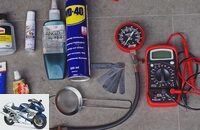
Refurbishment of used motorcycles
Use the winter break
4 pages) as PDF
€ 2.00
Buy now
Youngtimers at a discount rate?
To get straight to the point: There is actually no such thing as a cheap young or even old-timer. If a motorcycle is more than 15 to 20 years old, the rubber and plastic parts are particularly affected by hardening (regardless of the mileage), but many bearings also have to be removed and relubricated or replaced. The corresponding parts do not cost the world in accessories, but the workload is considerable. If you don’t do it yourself, it quickly becomes expensive.
Mileage: Some motorcycles seem to have only been pushed around the block in the course of their existence. Even mileages of 15,000 km after ten years are not uncommon. But that also means long idle times, which motorcycles usually don’t do well. Modern engines are now so solid that high mileage over 50,000 is not a problem. The (price) question is whether the displayed km reading is correct. Changing a speedometer is easy, and “specialists” reset an electronic speedometer to the desired level for a few euros.
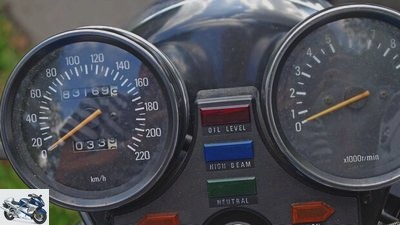
Ralf Petersen
When buying a used vehicle, you should of course pay attention to the mileage.
On-site inspection: It is important whether there are discrepancies between the statements made by the seller and the condition of the machine. Then better hands off! Equipped with tools, checklist, flashlight and mirror, you pay particular attention to the following points during the viewing appointment, starting with an examination while standing:
Optical impression: Caution, people always get pimped up! A look into hidden corners and under the bench can help here. With the help of a mirror, the underside of the vehicle and the exhaust system can be examined. Incorrect fluid levels (oil, cooling water, etc.) and screwed-up screws are clear signs of poor maintenance. The condition of the chrome parts is very important. If the surface is damaged and rusted, even the best polishing paste is no longer useful. Don’t forget to take a look inside the tank (flashlight), which must be absolutely rust-free.
Fall damage: A look at the steering stop helps here. Damage to the engine housing, exhaust, etc. can be repaired relatively easily. But if the steering stop on the frame is warped or if the paint is badly chipped off, then everything indicates a major fall damage. A small fall damage does not have to be a drama, but if the seller says no to the question and you can still find evidence of it, caution is called for.
Modifications / accessories: An ABE or a parts certificate must be available for all relevant parts. In the case of classics, it is particularly important that they are not in their original state.
Tires / Wheels: Not only the profile, but also the age and any vertical or lateral runout should be checked.
Suspension strut / telescopic fork: Check function when stationary (compress the machine strongly) as well as the adjustment of the suspension / damping and check for traces of oil (after the test drive).
Chain: It should be correctly tensioned and not unevenly elongated, the pinion and chain wheel must not have any “shark teeth”.
Warehouse: Check of wheel, swing arm and steering head bearings for play and wear.
Battery / electrical system: Check the battery / charging current with the multimeter. However, it only works if you can get to the battery.
Braking system: The thickness of the lining and the (clear) color of the brake fluid as well as the age of the brake lines are important.
Engine: Starting behavior / checking for noises such as strong rattling, rattling, etc. One should be suspicious if the engine has “accidentally” warmed up.
Test drive: Of course, you shouldn’t buy a motorcycle without a proper test drive. Here one pays attention to straight-line stability, braking power, engine running and pulling power, shiftability of the transmission as well as perfect functioning of the suspension and damping.
After buying is before buying
You can turn it around as you want, the inspection at the viewing appointment is only the first step. Not least because damage to the stand often only shows after many kilometers. A sensible start to the second test phase is therefore a really extensive test drive with a longer full throttle stage and, if possible, also in two-person operation. Does the engine pull through cleanly in every condition, does it get too hot under heavy loads, does oil leak somewhere, does the clutch separate cleanly and does it possibly slip in high gear? Is the straight line running at top speed and does the spring elements work properly on a jogging track? If everything is okay, the further test program takes place in the garage at home.
Motor check: The heart of the machine should of course be in as good a condition as possible, because engine repairs are usually time-consuming, expensive and hardly manageable by laypeople. A compression test provides the first information. All you need is a cheap tester from the accessories (e.g. from Louis). Since the candles have to be unscrewed for the compression test, the candle image can also be checked immediately. A fawn-brown, even color indicates a correct mixture and a well-adjusted carburetor. Do not forget to clean the often heavily soiled candle shaft (e.g. with compressed air) before dismantling so that nothing can fall into the combustion chamber.
The compression test is a kind of EKG of the motorcycle heart. It is not only important that the values are within the tolerance specified by the manufacturer, but above all that they are uniform. I would always change the oil and then let the oil drained off when the engine is warm run through a sieve. Residues such as metal shavings, small plastic particles indicate possible transmission damage and chain tensioner problems. Since the oil consumption is an important indicator of the state of wear, then meticulously top up the oil level and check it over the course of the next 1000 km. Make a careful note of any refill quantities. The oil consumption should not exceed 0.4 l for water-cooled and 0.7 l per 1000 km for air-cooled motorcycles.

Ralf Petersen
Leaked fork seals are a typical damage to standing.
Valve clearance control: Unfortunately, maintenance often takes place here, especially when certain cylinders are difficult to access due to their design. For engines with rocker arm / rocker arm control, readjusting is not rocket science, with bucket tappets with shims you can at least control the play.
Carburettor / injection systems: The mixture formers are a frequent source of malfunctions, especially on motorcycles that have been standing for a long time. In the case of carburettor models, draining and collecting the fuel from the float chamber (in a glass) gives a first impression of the condition. There are always some mostly indefinable residues / deposits. If the degree of soiling is too high, only dismantling and cleaning in the ultrasonic bath will help (for professionals). Particular attention should be paid to the intake manifold. Since they are made of rubber, they harden over time, become porous and carry the risk of attracting secondary air, which in extreme cases can even lead to engine damage. Check the air filter and air filter housing for cracks (due to aging / vibrations). All that’s missing is synchronization – done!
Spring elements: At least with the telescopic fork, it is advisable to change the fork oil. If the fork has to be dismantled for this, consider replacing the fork seals on an older motorcycle. They are wearing parts and it would be annoying to have to repeat the effort again at a later date.
Brakes: Even if the pads are still good after a visual inspection, you should dismantle the brake calipers and take a closer look, because the pistons are often dirty or corroded. Meticulous cleaning ensures that it functions properly and prevents the brake from jamming later. It makes sense that the brake fluid is also changed on this occasion, a corresponding change is pending anyway every two years. A last but important point is the control of the lines. If the original rubber lines are still installed, machines that are more than eight years old can be converted to steel flex lines.
Wheels / wheel bearings: It is true that any play can also be determined by checking when the wheel is installed, but it is only when the wheel is removed that it is possible to check that it is working properly and to identify traces of rust / corrosion on the bearings and axles.
Striptease: After dismantling the tank, seat, side covers and other cladding, paint damage is guaranteed to be found in places that are not visible from the outside, if things are going badly, even small rust nests or battered parts as well as chafing points on the wiring harness, etc. With little effort (touch-up pen / sealing) the damage is usually eliminated quickly.
Exhaust system: In particular, if it has a header or a connecting pipe, it is prone to corrosion. A thorough reconditioning (cleaning, polishing, etc.) hard work, a typical winter project, is more ugly than technically relevant.
Electrical system: The battery, alternator / charging circuit and the ignition system are checked according to the relevant specifications. A simple measuring device is sufficient for this. A relevant statement regarding the condition of the cable harness can be made after a leakage current / voltage test on a consumer (e.g. on the lamp).
You have probably now successfully bridged all the weekends up to the 2018 season. With this in mind: Always have a good trip with your new old one!
Mechanic courses
Ralf Petersen. The author works as a further education teacher at the VHS Duisburg and has been organizing mechanics courses for 21 years.
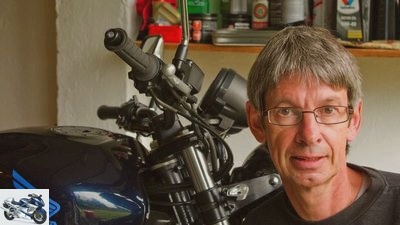
Ralf Petersen
Ralf Petersen.
12 to 15 practical seminars on maintenance, repair and technology are offered every year. In 2015, Delius Klasing-Verlag published his book “Basiswissen Motorrad-Technik”. Info: www.motorrad-schrauberkurse.de, Facebook: Motorrad-Technik Petersen
Related articles
-
This is how you prepare your motorcycle for the winter break
Andreas Bildl 13th pictures Petersen 1/13 Step 1: Big Wash – Thoroughly clean the motorcycle before winter. Petersen 2/13 Step 2: Jacked up – with more…
-
Touring motorcycles in a used check
archive counselor Used purchase Touring motorcycles in a used check Touring motorcycles in a used check Travel machines up to 2500 euros Anyone who wants…
-
Editors’ favorites Used motorcycles
KTM 22nd pictures archive 1/22 Honda VT 500 C: Rest? Relatively far back. Handlebar? Owing to the style of the time. But this engine: still nice to look…
-
Tips for buying used motorcycles with over 100,000 kilometers
Herder 21 pictures Lohse 1/21 Aglasterhausen, Ducati ST2, EZ 4/2002, 121,766 km. Lohse 2/21 Actually a tragic case. Ducati is building a famous tourer…
-
Used motorcycles between 1000 and 4000 euros
archive counselor Used purchase Used motorcycles between 1000 and 4000 euros Advice on used bikes from 1000 to 4000 euros Bargain motorcycles It wasn’t…
-
Used motorcycles with few weaknesses
archive counselor Used purchase Used motorcycles with few weaknesses Second-hand advice – MZ, Honda, Yamaha, Ducati Carefree bikes: Motorcycles with few…
-
48 hp motorcycles in used advice
viperagp – Fotolia / MOTORRAD 20th pictures Artist 1/20 A Harley Sportster 883 is only slightly above the A2 limit with an open 53 HP, a circumcision…
-
Motorcycle transport lock from AXfix: For motorcycles with hollow axles
Motorcycle transport solutions Caravans, mobile homes, trailers, transport systems manufacturer 5 pictures manufacturer 1/5 Through the hollow axles of…
-
Winter break: this is how bikers get over the compulsory break
Yamaha counselor Winter break: this is how bikers get over the compulsory break Winter break This is how bikers get over the compulsory break Winter…
-
Used motorcycles up to 2000 euros
counselor Used purchase Used motorcycles up to 2000 euros Used motorcycles up to 2000 euros Good and cheap Even with a limited budget for used purchases,…